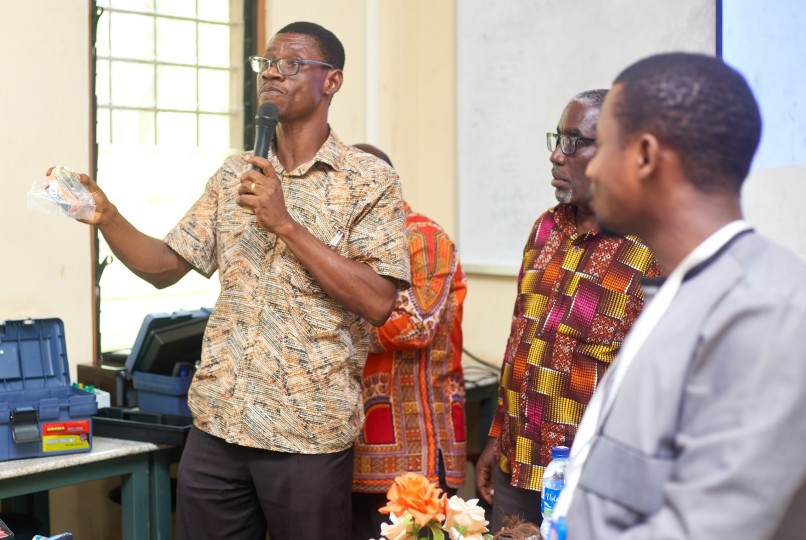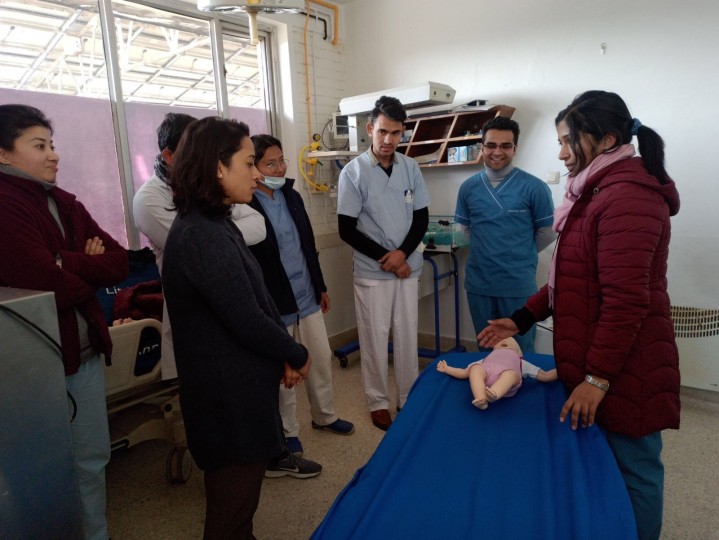COLLABORATION LABORATORY MIDPOINT UPDATE
The first round of Learning Exchanges was completed in December 2019, and STAR’s Academic Partnerships (AP) Team has successfully completed the midline virtual Learning Exchanges that were scheduled in April. The virtual Learning Exchanges are workshops conducted to assess partnership strength, knowledge management (KM) capacity-building, provide tailored technical resources and strategies, and offer Collaboration Laboratory participants a space to communicate challenges, lessons learned, and successes.
CREATING AN ENABLING ENVIRONMENT: MOTIVATION, ADAPTABILITY, AND COMMUNICATION
Sarah Sullivan, from Touro University, partnering with the University of Saint Francis Xavier (USFX) in Sucre, Bolivia, believes that the commitment to the partnership’s mission, goals that have been mutually agreed upon, and motivation are three key drivers that make their partnership successful.
“… the group [is] motivated [to engage] in quality research with partners from other universities and establishing a research ethics committee will be a means to achieve the end.” – Sarah Sullivan, Touro University California
Sarah and her Bolivian colleague, Scarley Martinez, are working to institutionalize a research ethics board for USFX. This board will enhance the quality of research ethics and create the potential for increased regional collaboration. An IRB is required for conducting human-subject research and doing so in an ethical, respectful manner. Currently, universities conducting this type of research with USFX have to do so via a third party that has an established IRB, limiting USFX’s collaborative research potential and requiring more time and resources from its partners.
The AP Team soon noticed that, in reality, these partnerships are not always limited to pairs. Instead, there are multiple partners involved in carrying out the goals of the Collaboration Laboratory projects. Academic institutions rely on a broader ecosystem to function successfully. For example, Uganda Martyrs’ University and the University of Notre Dame are direct partners. However, outside of this, the Palliative Care Association of Uganda is leading data collection and integration of the team’s work into the Ministry of Health’s module on palliative care. All these partners play a critical role and cannot meet the goal alone. The Collaboration Laboratory is providing a pillar of support to strengthen the research infrastructure and service delivery around palliative care in Uganda.
“The partnership relies on external factors and collaboration- because without other partners, it is not possible to complete work...It is not a negative reflection on the partnership but the reality of relying on external collaboration in order to meet objectives.” – Lacey Ahern, University of Notre Dame

Valley View University presenting toolkits to Biomedical Engineering students. These aim to enhance students’ learning experience to reflect the region’s increased access to more technologically advanced medical equipment (Left: Emmanuel Prah, Right: Abraham Ababio)
Kenyatta University (Nairobi, Kenya) and Valley View University (Accra, Ghana) are the only partners cooperating for the first time. They are finding innovative ways to overcome the challenges of their local environments. Valley View University faces challenges related to [Text Box: Valley View University presenting toolkits to Biomedical Engineering students. These aim to enhance students’ learning experience to reflect the region’s increased access to more technologically advanced medical equipment (Left, Emmanuel Prah, Right, Abraham Ababio)] connectivity, but through problem-solving, communication, and collective decision-making, Kenyatta University and Valley view have adapted their actions to meet their needs, showing mutual commitment to the partnership. Both universities highly value consensus and open conversations to make the best decisions for their partnership and project.
“At the partnership level, key decisions on the project have always been subjected to critical discussions. Partners have been allowed to freely express opinions on key elements of the project… we have adopted a flexible communication system to help us deliver the outcomes intended in this project.” – Abraham Ababio, Valley View University
BROADENING THE LENS: THE NEED FOR KM CAPACITY
Knowledge management (KM) is a process of capturing, synthesizing, sharing, and effectively using individual and institutional knowledge. When KM components are not working effectively, the most promising projects cannot reach their full potential and audience. Based on our Capacity Assessment Toolkit, most Collaboration Laboratory academic institutions show varying levels of familiarity, but overall were not familiar with KM concepts and strategies, causing gaps in understanding what makes a comprehensive and strong KM system, which affect their projects’ effectiveness. This lack of familiarity applies to both low-, middle-, and high-income-country partners. Technical knowledge is often self-contained within projects but not widely shared within academic institutions, and externally with the global health community. To address this gap, the Academic Partnerships developed and shared a variety of KM resources to help the participants better understand KM and better assess their institutions. These resources can be found here:
1. STAR FAQs on KM
2. Steve Song Presentation on KM
3. Initiating KM in Colleges and Universities [Article]
4. The following series of videos:
“The academic staff are enthusiastic about sharing knowledge, but it is necessary to improve infrastructure. The will is there, but implementation is not at its best.” – Sheba Nyakaisiki, Uganda Martyrs University

Kathmandu School of Medical Sciences’ and partner, Medical College of Wisconsin conducting a simulation on anaphylaxis protocol in Nepal.
Through Kathmandu School of Medical Sciences’ (KUSMS) partnership with the Medical College of Wisconsin (MCW), STAR’s AP Team learned that university partners often wear multiple hats. For example, they are not only project leaders, but also hospital emergency physicians. This poses challenges but also has possible benefits, such as expanding technical expertise and community membership. KUSMS is trying to increase its emergency staff’s access to and application of the latest, vetted, and locally relevant knowledge of emergency-department (ED) protocols and in-situ simulations. MCW is learning how to adapt its knowledge to a new country context. Their partnership experience has been positive, and both teams plan to continue working together after the end of the Collaboration Laboratory.
“It’s a wonderful experience making protocols and all, so we are really excited. Anmol [Roshana’s KUSMS colleague] and [I] talked, and we said that we will continue with this [partnership] even after the STAR Project is completed in one year because we think that this is really necessary.” – Roshana Shrestha, Kathmandu University School of Medical Sciences
HOW YOU CAN GET INVOLVED
STAR’s observed factors come from learning from our Collaboration Laboratory partners. We can learn from you too! Have you partnered with another institution to tackle a global health challenge? Share your experiences with us on Twitter and LinkedIn with #GHcollaboration.
As mentioned earlier, when KM components are not working effectively, the most promising projects cannot reach their full potential and audience. Watch this video on knowledge management. Then, use STAR’s Capacity Assessment Toolkit to assess KM in your organization. What do you find? What does it look like? Tell us on Twitter and LinkedIn with #GHcollaboration